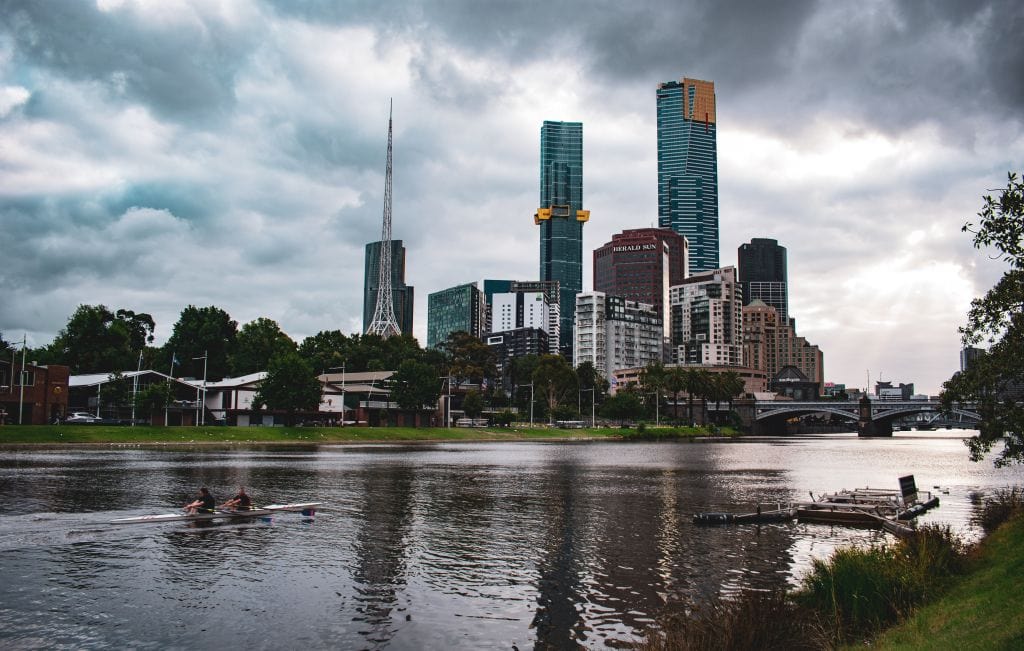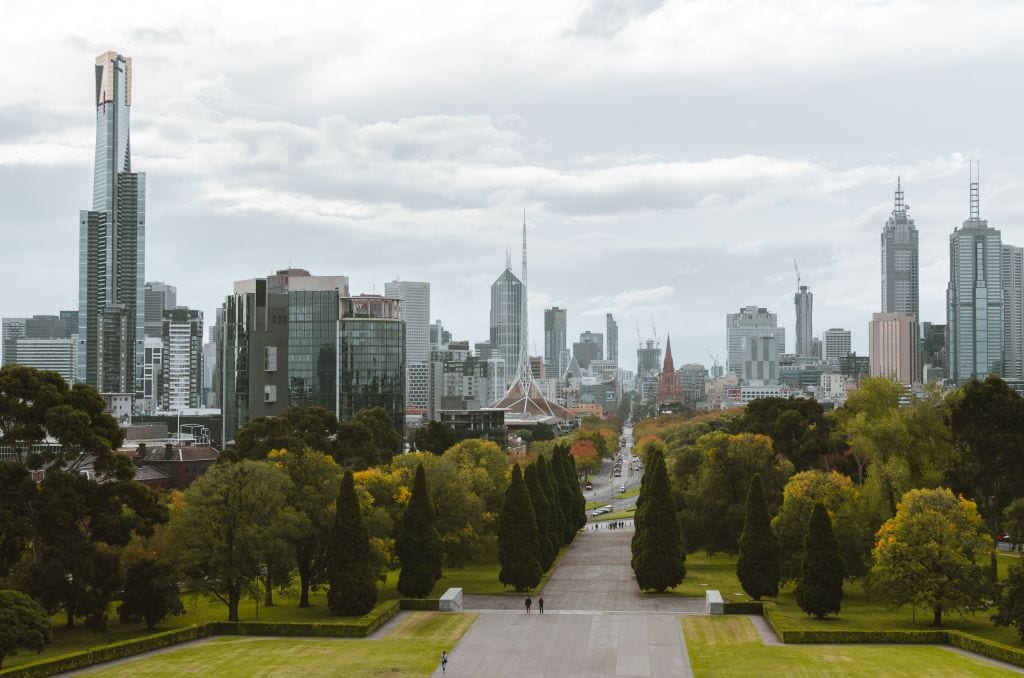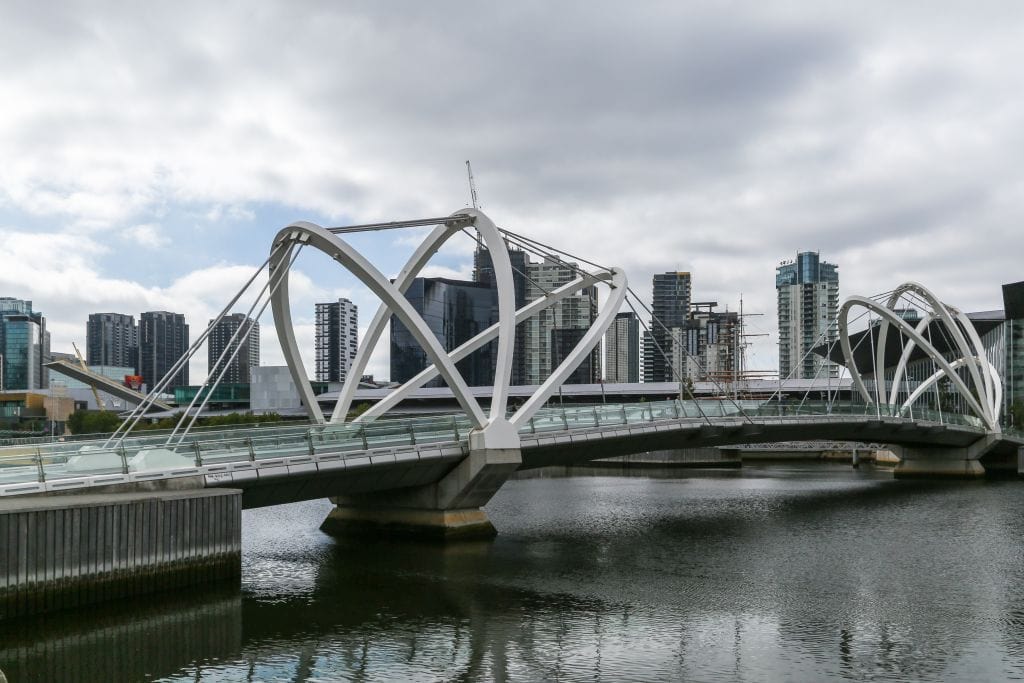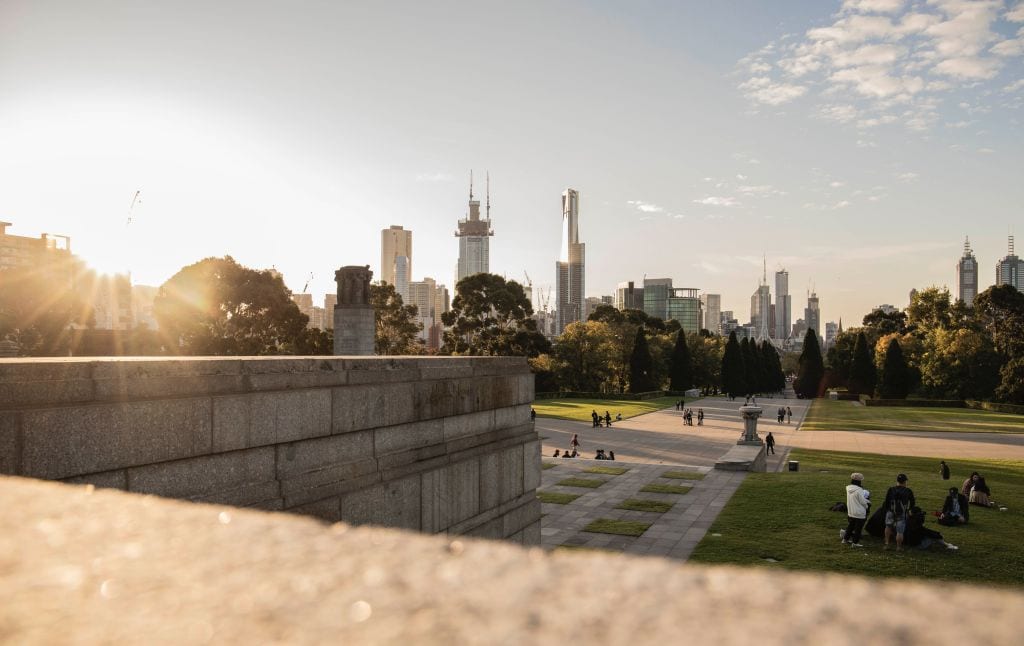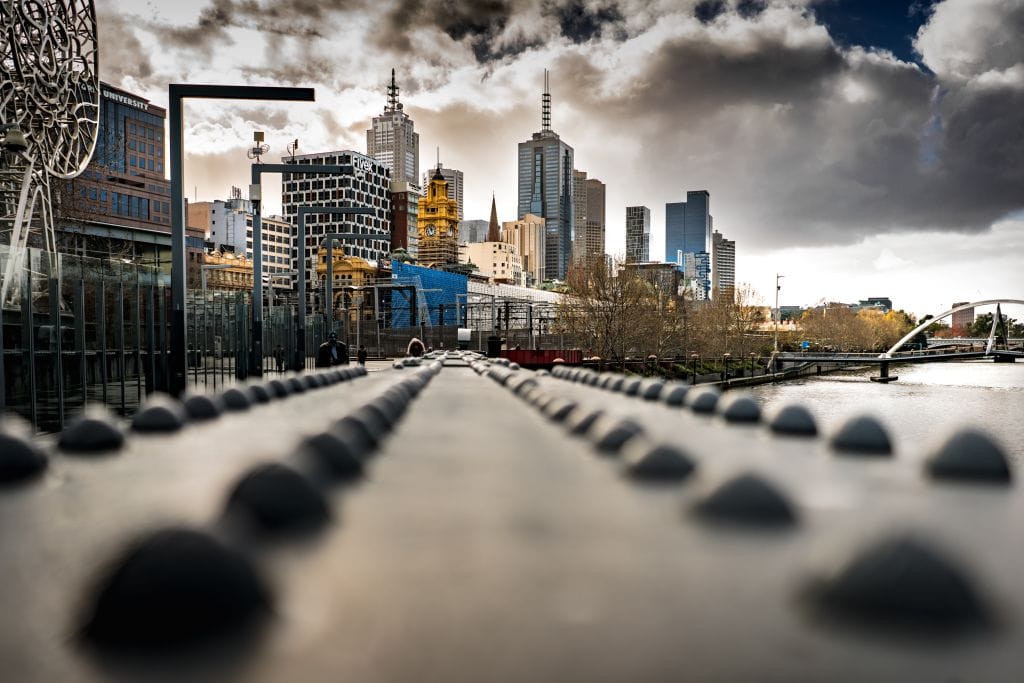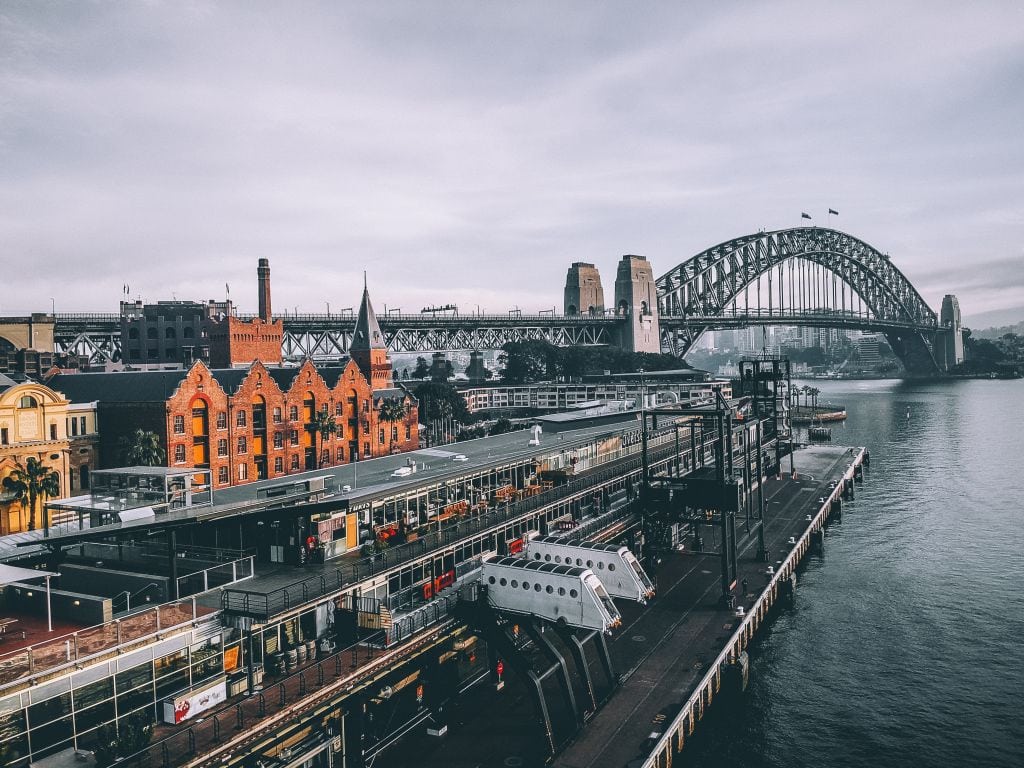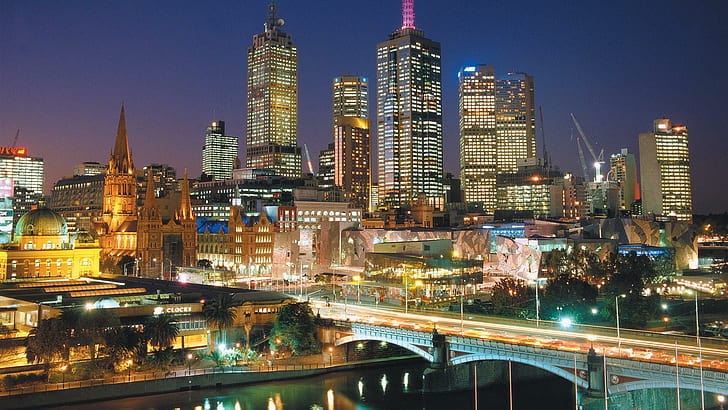Melbourne wishes to respectfully acknowledge the Kulin Nation as the traditional owner of the land on which the city was founded. The unique city was once known by its colonial name, Melbourne, but is now known by its current name.
Melbourne is now widely regarded as a global centre for culture and diversity. For the Kulin Nation's Wurundjeri, Boonerwrung, Taungurong, Djajawurrung, and Wathaurung, this area has long served as a central meeting point and venue for important social, educational, sporting, and cultural events.
History of Melbourne
Melbourne, the capital of the Australian state of Victoria, is home to nearly 4 million people. Large numbers of Melburnians live in the suburbs to the east and south of the Yarra River, which stretch from Port Phillip Bay to Mount Dandenong.
After an initial attempt to settle inside the heads of Port Phillip Bay near Sorrento in 1803 failed, the city of Melbourne was founded on the Yarra River in 1835. A prior attempt had been made in 1803.
The Port Phillip District declared its independence from New South Wales in 1850 and was victorious. A period of rapid expansion for Melbourne can be attributed to the gold rush that took place to its north in the 1850s.
Melbourne is widely regarded as both Australia's most significant economic hub and culinary capital. Also, it is the best city in the world in terms of sports, and it is generally considered to be more sophisticated than its northern neighbour, Sydney.
Similar to what motivated their occupation of the other Australian colonies, British concerns about French colonisation prompted the initial occupation of Victoria. British and French explorers had made substantial contributions to our understanding of the coast by the end of the eighteenth century.
Lt. David Collins and a group of convicts and free settlers arrived in Port Phillip (near Sorrento on the Mornington Peninsula) in October 1803 in response to a perceived threat from the French. This was the site of a fleeting colony.
Collins abandoned his brief attempt at settling the area in May of 1804, after receiving permission to move the colony to Van Diemen's Land.
Between 1810 and 1820, Port Phillip was a popular destination for whalers and sealers working along the coast of Australia, from Van Diemen's Land (now known as Tasmania) to South Australia.
It was land-based explorers who, after venturing south from Sydney, crossed the Murrumbidgee River and continued on towards the southern coast who provided the real impetus for permanent settlement. This was the original impetus for establishing a permanent community. A year later, in 1824, Hume and Hovell landed in Port Phillip.
They mistook it for Western Port, and two years later, following their misguided recommendation, a military and convict outpost was established there. While that was happening, thirteen months passed. Around this time, John Batman, an intrepid settler from Van Diemen's Land, petitioned the Governor of New South Wales for permission to establish a colony in the region surrounding Western Port. Unfortunately, his efforts were fruitless.
He had heard that the land was fertile and that there were plenty of pastures for animals. The Governor was afraid that establishing a second colony would lead to problems, so he refused Batman's request to do so. Unfortunately, this proved to be nothing more than a show of solidarity with no real meaning behind it. Eight years later, in November 1834, despite being forbidden to do so by the governor of New South Wales, Edward Henty made the decision to settle at Portland Bay.
In June 1835, after first crossing Bass Strait in the early months of 1835 after being inspired to do so by Henty's example, Batman famously "bought" the land on the western shore of Port Phillip from the indigenous people who lived there.
Along the Port Phillip coast, Batman explored potential sites for a new settlement and ultimately settled on one. Within a year, the settlement of Melbourne had grown and become more populous along the Yarra River.
Melbourne was formally surveyed and named in 1837. On the same day, Captain William Lonsdale, a magistrate from Sydney, was sent to oversee law and order.
This meant that the New South Wales government had to deal with Victoria as a prosperous and partially independent colony. It seems that no amount of effort on their part could have prevented the land from being settled.
In September of 1839, this came to pass when Charles La Trobe, newly appointed Superintendent of the Port Phillip District, moved to Australia from England.
Colonists followed his lead and established their own police force, customs office, and, most significantly, Lands Office.
While it's true that over 20,000 of the state's 80,000 residents called Melbourne home in 1851, that all changed with the discovery of gold. In theory, Victoria's economy would still be based on agriculture, but the discovery of gold radically altered the state's economic landscape.
The Gold Rush
In 1856, more than 86,000,000 g of gold were mined. This would lay the groundwork for unprecedented growth, elevating Melbourne to Australia's preeminent financial hub and making Victoria a highly prosperous colony.
It is estimated that more than $100,000,000 in gold was mined from the ground in the 1850s.
In 1855, a Legislative Council and Legislative Assembly were created to govern the colony. There was a lot of friction within the group due to the fact that membership and voting privileges were tied to the ownership of large parcels of land.
Therefore, the first Parliament was almost entirely made up of wealthy merchants, affluent squatters, and successful businessmen. Attorneys also played a crucial role. Possibly they were representative of the 80,000 people who lived in the state in 1851, but it's highly unlikely that they were representative of the 300,000 who lived there in 1855.
Although the city would experience economic downturns in the 1890s and 1930s, Melbourne was still a thriving metropolis.
Post-World War II immigration from non-English speaking countries, especially Italy and Greece, contributed to Australia's vitality and dynamism. These newcomers added to the state's vitality and dynamism.
The city of Melbourne, Australia, is often referred to as the largest Italian city outside of Italy and the second-largest Greek city in the world. However, this ranking has recently been updated to reflect Melbourne's new position as the third-largest city in the world. Lygon Street, famous for its wide selection of restaurants serving food from around the world, is a perfect symbol of Melbourne's diverse population.
History Part 2
The city of Melbourne and the state of Victoria were founded as a direct result of the efforts of free settlers who were dissatisfied with the level of attention paid to the growth of the area by the New South Wales Colony government.
The current extreme south-east corner of Australia was once part of New South Wales. The Murray River formed its northern border, and Bass Strait formed its southern (NSW). New South Wales (NSW) was formerly the eastern two-thirds of Australia, with its capital in Sydney. The first European settlement in the area now known as Sydney was founded by the British colonial government in 1788.
It was hard enough for the settlement to provide for itself, let alone venture out on exploratory missions. One can fly to the current site of Melbourne in an hour from Sydney, or drive the 1200 kilometres (7 hours) to get there. The current site of Melbourne may as well have been on another planet to the people of that era.
It wasn't until 1802 that sailors caught their first glimpse of Port Phillip Bay, an open and expansive body of water located roughly in the middle of the southern coastline of the present-day Australian state of Victoria. It has a length of over fifty kilometres, making it look like a chubby pear, and its stem is the mouth of the Yarra River. Its breadth is nearly as long as its length.
Despite having a 265-kilometer coastline, the entrance to Port Phillip is less than four kilometres wide, making it difficult to see from a distance at sea.
A year later, Sydney's government gave Lieutenant Governor of Tasmania David Collins permission to found a colony in the Port Phillip region. There were about 300 people in total, including convicts, sailors, their families, free settlers, and others.
Poorly situated, it failed within months and was relocated to the southern coast of Tasmania (then known as Van Diemen's Land, after the Dutch explorer Abel Tasman's 1640 discovery). Due to its unfavourable positioning, it failed within a matter of months and had to be relocated to the southern coast of the island state of Tasmania. Collins established Hobart Town on Tasmania with the intention of making it the state capital.
In 1826, a second attempt was made to found a Victorian settlement near Corinella on the shore of the much smaller Western Port Bay. The settlement of Settlement Point, on the modern road to Phillip Island, is located about 110 kilometres south-east of Melbourne. It failed after a few months of trying.
As a result of the failure of the government to populate the area, enterprising settlers from Tasmania began to move into the region in search of farmable and pastoral land. They simply took ownership of large swaths of land and "squatted" on them, as had happened in other parts of the colony.
These squatters moved onto the property without official authorisation and resisted all efforts to have them removed.
John Batman "bought" about 243,000 acres of land from the local Aboriginal people in Port Phillip Bay in 1835 by bringing them blankets and other gifts in May. Melbourne, the modern city, was built on part of this land.
Similarly, the Henty family moved across Bass Strait a year earlier to settle on a farm and grazing land near Portland, about 360 kilometres west of Melbourne.
Since the early 1800s, the port of Hobart had served as a whaling station, being the only deep-water port between Melbourne and Adelaide, the capital of South Australia.
Governor Bourke decided to open up the area around Port Phillip for settlement because there were already about two hundred squatters living there and using land that rightfully belonged to the colonial government.
In order to build a town, John Batman bought a plot of land from the natives. While Bourke was unimpressed by how Batman "bought the land from the indigenous people" in March 1837, he did agree that the area around the Yarra River was the best spot for a settlement to be established.
Bourke named the city Melbourne in recognition of the British Prime Minister at the time. As part of his plan, he ordered a survey of the land to be conducted and a public land sale to take place on June 1, 1837, so that settlers could purchase legally binding titles to their township blocks. The Yarra River now forms the southern boundary of Melbourne and meanders through several of the city's outlying neighbourhoods.
Governor Bourke's designation of Melbourne as both an administrative centre and a legal port paved the way for the development of the city into a financial and cultural hub. By 1838, thanks to the influx of merchants and bankers, the town had four banks and was in the midst of constructing significant public buildings.
By the 1840s, locals were already banding together to fight for autonomy from Sydney's central government. They complained that land sale proceeds were being sent to Sydney instead of being invested in the growth of the new community. As a result, they felt shortchanged when only six seats were granted to them in the colonial legislature.
Surprisingly, the Gold Rush in both Victoria and New South Wales began in the same year, 1851. Records show that at least six or seven gold discoveries were made in New South Wales after 1823, but historians generally agree that these discoveries were hidden for political reasons. A third of Melbourne's adult population left the city for the gold diggings after gold was discovered in Bendigo and Ballarat, both to the west and north-west of Melbourne.
Tens of thousands of immigrants, mostly from the United States and southern China, entered Australia through the city of Melbourne, a major port. The population of Victoria reportedly increased by 95,000 in the year following the discovery of the first gold deposit in the state, while the population of the goldfields increased to 60,000. Incredible quantities of plant life were found in the fields. In the 1860s, Victoria mined nearly all of Australia's gold.
Melbourne's future as a global metropolis was secured by the influx of both wealth and people. About 125,000 people called the township founded by John Batman in 1861 their home by 1891.
Public and private structures like schools, churches, and mansions for prosperous businesspeople and professionals sprang up after the discovery of gold.
Melbourne's prominence on the global stage was cemented by the 1880 International Exhibition it hosted. Exhibition Buildings are a reminder of why Melbourne became known as "Marvelous Melbourne" at the time.
The city became prosperous as a major trade hub due to the export of wool, wheat, and other agricultural products.
Up until the 1970s, Melbourne served as Australia's financial centre, and many of the country's largest corporations had their headquarters there. While most Victorians will be the first to admit that Sydney is now the country's financial centre, that doesn't change the fact that Melbourne held that title in the past.
Melbourne, Australia, is home to around 3.2 million people right now. For many reasons that have been forgotten, it was a major draw for Greeks and Italians at the turn of the twentieth century. In terms of population, it ranks third.
Greece's largest city and Italy's largest city outside of Italy. Much like Sydney, it has a sizable Chinese community that arrived during the gold rush of the 1850s. Melbourne has long been considered the spiritual and cultural centre of Australia's Jewish community.
There are between 110 and 140 different ethnic groups living in the city, according to the government, and the mix is not too dissimilar from Sydney's.
Origin of Melbourne
Where did the name Melbourne come from?
John Delaney, a native of Derbyshire, England, explains how this quaint market town in the English Midlands is linked to Victoria, a bustling metropolis.
Australia's Yarra River bank settlement of 1837 needed a moniker. The capital of the state that bears Queen Victoria's name, Melbourne, was chosen by the monarch. The 2nd Viscount Melbourne, former Prime Minister of the United Kingdom and political advisor to the young Queen, was very deserving of this recognition.
Lord Melbourne's family name was Lamb, and he got his nickname from the small town of Melbourne, in Derbyshire, where he lived at Melbourne Hall, the Lamb family estate. Lady Caroline Lamb, his wife, gained fame thanks to her marriage to the poet Lord Byron.
The Kerr family, original owners of Melbourne Hall, started building it in 1628.
Melbourne, Derbyshire is a thriving community of over 6,500 people and rich in history that continues to thrive today. Thomas Cook, the founder of the first international travel agency, was born there.
The relationship between Melbourne, Derbyshire and Melbourne, Victoria has been positive for decades. Melbourne, Derbyshire has seen an influx of visitors from the city that shares its famous name in the Antipodes.
If anyone ever asks where our magnificent city got its name, you'll finally have an explanation at the ready.
Is Melbourne named after Lord Melbourne?
The city of Melbourne, Australia, is named after William Lamb, also known as Lord Melbourne (as many of the other answers have already pointed out). The city of Melbourne is located in the Australian state of Victoria, named for Queen Victoria, who ruled during the same era.
Queen Victoria relied heavily on her first Prime Minister and closest advisor, Lord Melbourne, in the early years of her reign. Victoria had only recently turned 18 when she became queen.
Since Melbourne was such a powerful figure at the time, and because he lived in an apartment at Windsor Castle, rumours circulated for a while that the recently widowed monarch had a crush on the young, single Queen, forty years his junior. An apartment belonged to Melbourne at Windsor Castle.
Before he retired and she married Albert, she endured years of derogatory references to herself as "Mrs. Melbourne." That's why, and it's also because she's been acting in ways that show Melbourne's influence on their relationship. They had recently married and were living together at the time.
In his own words, Melbourne likened their relationship to that of a father and daughter, which, given their age difference, may be more accurate.
Nonetheless, the history behind Victoria, Australia's capital city's moniker "Melbourne," has always intrigued me. Were you making this choice on purpose? Melbourne is not only within Victoria, but has also retained its dominance over Victoria even after the people who gave both cities their names had passed away.
Conclusion
Melbourne was built on land that was originally owned by the Kulin Nation. Melbourne, the colonial name of the city, has been replaced by simply Melbourne. Massive numbers of Melburnians call the outer neighbourhoods in the east and south of the Yarra River home. The city of Melbourne was formally laid out and given its name in 1837. To take up his position as Superintendent of the Port Phillip District, Charles La Trobe emigrated from England to Australia.
The colonists set up their own police force, customs office, and most importantly, Lands Office in September of 1839. Greater than 86,000,000 g of gold were extracted in Victoria in 1856. In doing so, Melbourne would establish itself as Australia's premier financial hub, setting the stage for unprecedented growth. The colony's legislative bodies, the Legislative Council and Legislative Assembly, were established in 1855. A portion of New South Australia was relocated to become present-day Melbourne.
Both the Murray River and Bass Strait served as its northern and southern borders, respectively (NSW) Sydney, the state capital of New South Wales, once encompassed the entire eastern half of Australia. The first time mariners saw Port Phillip Bay was in 1802. After some consideration, Governor Bourke authorised settlement in the Port Phillip Bay area in 1837. John Batman purchased land from the locals in order to establish a settlement. The Yarra River, which once divided the city, now serves as its southern boundary and winds through various suburbs.
In 1851, both New South Wales and Victoria experienced their first gold rushes. After the discovery of gold, a third of Melbourne's adult population fled to the diggings. Most of Australia's gold production in the 1860s came from mines in Victoria. With a population well over 6,500, Melbourne, Derbyshire is a thriving historical community. Thomas Cook, the pioneer of the modern travel agency, was a native of that region.
The city's population is estimated to include anywhere from 110 to 140 distinct ethnic groups, according to the local government. The city of Melbourne, Australia, was named after William Lamb, also known as Lord Melbourne. Queen Victoria, who reigned during the same time period as Melbourne, Australia, inspired the state's name. Melbourne owned an apartment in Windsor Castle, where rumours spread that he had a crush on Queen Victoria.
Content Summary
- Melbourne recognises the Kulin Nation as the traditional custodians of the land on which the city was established.
- Melbourne is now recognised as a cultural and diversity hub on an international scale.
- A failed settlement attempt in 1803 inside the heads of Port Phillip Bay near Sorrento led to the establishment of Melbourne on the Yarra River.
- John Batman, an adventurous settler from Van Diemen's Land, asked the Governor of New South Wales for permission to found a colony in the area around Western Port around this time.
- In 1851, Melbourne was home to over 20% of the state's population, but after gold was discovered, that number quickly dropped to 0%.
- There was a mad dash for the gold.
- More than 86,000,000,000 grammes of gold were extracted in 1856.
- This would pave the way for unprecedented development, making Victoria a very prosperous colony and establishing Melbourne as Australia's preeminent financial hub.
- The 1850s saw the extraction of an estimated $100,000,000 in gold.
- Immigration from non-English speaking countries, especially Italy and Greece, after World War II boosted Australia's vitality and dynamism.
- The Australian metropolis of Melbourne is often referred to as the world's second-largest Greek city and the largest Italian city outside of Italy.
- The Upcoming Epochal Turn in Time
- Free settlers were dissatisfied with the level of attention given to the growth of the area by the New South Wales Colony government, and as a result, the city of Melbourne and the state of Victoria were founded.
- New South Wales used to include what is now Australia's southeasternmost point.
- Sailors didn't get their first look at Port Phillip Bay, a wide and deep body of water smack dab in the middle of the present-day southern coast of the Australian state of Victoria, until 1802.
- When the government didn't do enough to bring people there, enterprising Tasmanian settlers moved in. They were looking for fertile land to farm and raise livestock.
- In May of 1835, John Batman essentially "bought" 243,000 acres of land in Port Phillip Bay from the indigenous people who lived there by bringing them blankets and other gifts. On some of this land, the contemporary metropolis of Melbourne was established.
- Since there were already about two hundred squatters living in the area around Port Phillip, Governor Bourke made the decision to open it up for settlement.
- John Batman purchased a plot of land from the locals in order to establish a settlement.
- Bourke honoured the then-Prime Minister of the United Kingdom by naming the city he founded there after him: Melbourne.
- Governor Bourke's proclamation of Melbourne as the state capital and an official port laid the groundwork for the city's growth into a major economic and cultural centre.
- Oddly enough, the Gold Rushes in both Victoria and New South Wales started in 1851.
- Besides being the largest city in Greece, it is also the largest Italian city outside of Italy.
- Since colonial times, Melbourne has been revered as Australia's spiritual and cultural epicentre for Jews.
- The government estimates that there are between 110 and 140 distinct ethnic groups represented in the city's population; this diversity is not too dissimilar from that of Sydney.
- Queen Victoria herself selected Melbourne as the state capital that bears her name.
- Originally from the Lamb family, Lord Melbourne took his moniker from the Derbyshire village of Melbourne, where he maintained the Lamb family estate known as Melbourne Hall.
- Melbourne, Victoria and Melbourne, Derbyshire have had cordial ties for many years.
- How significant is Lord Melbourne in relation to the naming of Melbourne, Australia?
- Named after William Lamb, also known as Lord Melbourne, the city of Melbourne, Australia is located in the southern part of the country (as many of the other answers have already pointed out).
- Queen Victoria, who reigned during the same time period as Melbourne, Australia, inspired the state's name.
- However, I've always been curious about the origin of the name "Melbourne" for Victoria, Australia's capital city.
FAQs About Melbourne
Melbourne was founded on the Yarra River in 1835 after an abortive bid in 1803 to establish a settlement inside the Port Phillip Bay heads near Sorrento. The Port Phillip District gained independence from New South Wales in 1850. Melbourne boomed in the 1850's as a result of the gold rush in the region to the north.
Melbourne's culture is vibrant and alive. A city that incites inspiration, it's a melting pot of creativity expressed in its arts, design, fashion and events. You will discover that from theatre shows and live music to comedy clubs and fashion shows, Victoria celebrates a vibrant artistic culture, ready to be explored.

